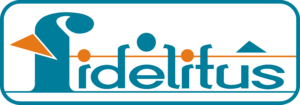Overseeing a team of remote employees isn’t a cup of tea for most managers. However, with remote work becoming the new norm in a post-pandemic world, companies are focusing on developing potent remote management processes to keep track of employees’ workload and establish a culture of accountability. From tech tools to management styles, here are a few ways you can manage tasks of remote employees efficiently and effectively.
Make Good Use of Online Tools
Managing a remote team can be chaotic but with the right planning, you can keep track of your employees’ workload and avoid slack. When it comes to managing a remote team, three elements are of utmost importance; quality, reliability, and communication. Make sure to employ an increasing number of amazing online tools to operate at a high level, such as slack and Skype for communication, Trello and Taskque for project management, G Suite for creating and sharing emails and document, and Asana for assessing workload and assigning new tasks. Reliance on multiple platforms help add transparency.
Relying On Effective Technology
Project software can help to create greater accountability and transparency. When the entire team can see what projects are being worked on, who is working on what, along with key timelines and deliverables, employees are more likely to be responsive, follow through on commitments and take responsibility for results.
Establish Regular Check-ins
After initial meetings or assigning tasks to all team members via your project management tool, communication falls through the cracks. If you want to avoid missing deadlines, leaders and team managers need to constantly check on progress and intervene when necessary. Successful remote managers establish frequent check-ins with their remote employees, be it in the form of one-on-one calls or team meetings. The important point here is to establish rules of engagement, so that you can set the frequency, means, and ideal timing of communication for the entire team. For instance, you can use videoconferencing for daily check-in meetings, but stick to IM when something urgent pops up. This constant interaction and engagement will help remote workers feel included.
Weekly reports
The best way to manage tasks of remote workers is to ask for weekly reports on what they have accomplished in the week and what they hope to accomplish in the upcoming week. This is one of the best ways of assuring accountability and making sure that all your employees are on the same page. In addition, managers can guide people when they plan to do things that might not align with the current workflow or if they are neglecting a higher priority task and fixating on a lower-priority one.
In addition to weekly reports, it also helps to make your team complete an end-of-day report, detailing the progress of each task as well as pending ones. Instead of relying on daily reports, most task management software allow managers to see the progress of each task an employee has been assigned, in addition to time spent on each one. It’s a good investment for a business owner to bet on those tools as well.
Weekly sprints
Hold weekly video conferences with your team to discuss what projects need to be completed and what team members are responsible for. These collaborative meetings help managers divide tasks in a way that is manageable and efficient for everyone. Working in weekly sprints allows everyone to work at a proficient pace and stay accountable. At my workplace, we also hold a weekly ‘master KPI spreadsheet’ meeting, including the KPIs of all remote employees on a single sheet. Having this shared accountability helps to keep remote employees on the right track.
Time-tracking Tools
Employers are worried that their remote employees are spending more time at home doing personal chores than actually pulling their weight and doing anything productive, even though they appear to be online all the time. In a survey conducted on remote employees, a startling 64% of employees admitted to taking care of personal tasks during the remote workday. Not only that, your employees may be whiling away hours binge watching shows on Netflix during the workday or get sucked into the whirlpool of social media instead of actually working. This is where you can employ time-tracking tools such as TimeDoctor Tool” to track employee internet usage and measure productivity. Such a time-tracking tool helps you monitor an employee’s typed words, clicks, online activities, time spent on social media and much more.
Firm Deadlines and Outcomes
There is one thing I have learned working with remote teams: The more clearly you define the outcome you want and the expectations you have from your team, the closer you will get to achieve your desired goals. The outcome doesn’t only have to be deliverables but also a measure of how well your team communicated and pulled their weight to meet the deadlines. This is how remote managers can ensure that everyone has a clear expectation and can work together hand-in-hand, though remotely.
Focusing On the Big Picture
“Commination, motivation, and focus are key to successfully managing remote teams. Experts assert that focusing on how each task fits into the overall goal and keeping the bigger picture in mind at all times, motivate teams and drive them to accomplish each task. By practicing transparency at every stage, you instil trust in your remote employees. Team members need to know what their roles are, why they matter into the overall success of the organization, and what their accountabilities are to each other and to the organization. As a leader, it falls to you to create a context for your remote team.









